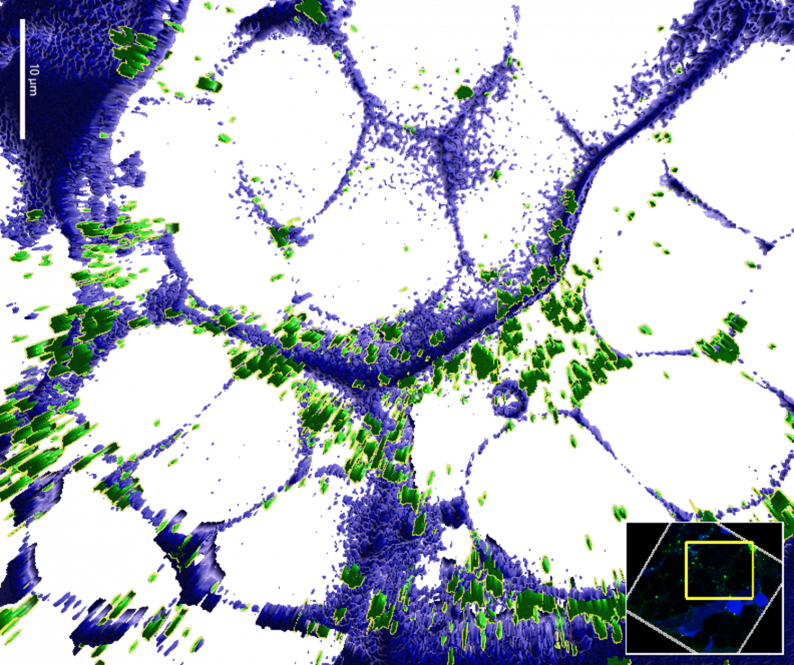Stem cells are the body’s wellspring of renewal. They can turn into any kind of cell the body needs, from liver to skin to bone. But the well would run dry if all the stem cells transformed.
The body solves this problem with chemical signals that keep stem cells in niches: secure spots where they stay in their special, undefined state. Stem cell daughters have to migrate out of the niches in order to grow up. But the chemical signals that keep stem cells as stem cells migrate out of the niches, too, which made scientists wonder what the chemicals were signaling out there.
Now, researchers from the Inaba Lab at UConn Health report in Nature Communications that location influences how the message changes.
They looked at stem cells in fruit fly testes. Decapentaplegic (Dpp) is a signaling molecule (green in the picture) that prevents stem cells in the niche from transforming. As the young stem cells move out of the niche, they begin to differentiate into specific types of cells (in this case, sperm.) Normally the Dpp diffuses out of the niche, too. In the picture, you can see the Dpp (green) diffusing through the space (blue) between cells. When the researchers blocked the Dpp from diffusing, they saw that the stem cells stopped migrating out and actually began to return to the niche, and did not begin maturing into sperm.
This discovery will be particularly important for researchers studying and manipulating stem cells in a dish, who need to know Dpp’s roles both inside the niche and without.



